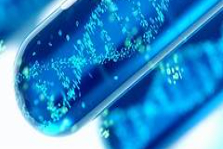Utilizing the Pyrx Program to Conduct in Silico Screening of Polyphenol Compounds as Potential Inhibitors of the Epidermal Growth Factor Receptor (EGFR) in Mango Plants (Mangifera Indica) http://www.doi.org/10.26538/tjnpr/v7i10.24
Main Article Content
Abstract
Mango (Mangifera indica) is a tropical plant from Asia with the potential to cure diseases including colorectal cancer. The research aimed to determine the amount of free energy (ΔG) from the polyphenol compounds of mango plants on Epidermal Growth Factor Receptor (EGFR) in silico using PyRx program with molecular docking method. The receptor used was downloaded from the Protein Data Bank (PDB) database with 1YY9 codes and the ligands used were downloaded from the KNApSAcK database. The validation of the docking method showed the RMSD value of 1.645 Å in the Alpha-Mannose; 1.381 Å in Beta-D-Mannose; 1.605 Å at 2-(Aetylamino)-2-Deoxy-A-D-Glucopyronose; and 1.334 Å in N-Acetyl-D-Glucosamine. As the standard, Cetuximab was used as a therapy for colorectal cancer. The polyphenol compounds in mango plants showed bond-free energy (ΔG) with a range of values between -8.5 kcal/mol to -6.0 kcal/mol, and the best value was Aurasperone D (-8.5 kcal/mol). Compared to Cetuximab (-6.4 kcal/mol), the value of bond-free energy (ΔG) of Aurasperoune compounds was smaller with quite a farther range of values -2.5 kcal/mol. Polyphenolic compounds discovered in Mango plants displayed potential as inhibitors for the Epidermal Growth Factor Receptor (EGFR).
Downloads
Article Details

This work is licensed under a Creative Commons Attribution-NonCommercial-NoDerivatives 4.0 International License.
References
NCI. Definition of cancer - NCI Dictionary of Cancer Terms [Internet]. National Cancer Institute. Available at URL: https://www.cancer.gov/publications/dictionaries/cancer-terms/def/ Web accessed 13.06.2022. [cited 2022 Jun 13]. Available from: https://www.cancer.gov/publications/dictionaries/cancer-terms/def/cancer
Di Donato M, Giovannelli P, Migliaccio A, Castoria G. The nerve growth factor-delivered signals in prostate cancer and its associated microenvironment: When the dialogue replaces the monologue. Cell & Biosci. 2023;13(1):1–18.
Zhu J, Zhou R, Xiao H. Mental disorder or conscious disturbance in epidermal growth factor receptor-tyrosine kinase inhibitor treatment of advanced lung adenocarcinoma. EXCLI J. 2020;19:230.
Naik HN, Kanjariya D, Parveen S, Meena A, Ahmad I, Patel H. Dalbergia sissoo phytochemicals as EGFR inhibitors: an in vitro and in silico approach. J Biomol Struct Dyn. 2023;1–13.
Zakaria L. Fusarium Species Associated with Diseases of Major Tropical Fruit Crops. Horticulturae. 2023;9(3):322.
Akbari B, Baghaei-Yazdi N, Bahmaie M, Mahdavi Abhari F. The role of plant-derived natural antioxidants in reduction of oxidative stress. BioFactors. 2022;48(3):611–33.
Mirza B, Croley CR, Ahmad M, Pumarol J, Das N, Sethi G, et al. Mango (Mangifera indica L.): a magnificent plant with cancer preventive and anticancer therapeutic potential. Crit Rev Food Sci Nutr. 2021;61(13):2125–51.
Brogi S, Ramalho TC, Kuca K, Medina-Franco JL, Valko M. In silico methods for drug design and discovery. Frontiers in chemistry 2020;8:612.
Jakhar R, Dangi M, Khichi A, Chhillar AK. Relevance of molecular docking studies in drug designing. Curr Bioinform. 2020;15(4):270–8.
Tahir M, Baharuddin M, Najib A. In silico screening of brotowali (Tinospora crispa L.) chemical compounds as α-glucosidase inhibitor using the pyrx program. In: AIP Conference Proceedings. 2023.
Xue Q, Liu X, Russell P, Li J, Pan W, Fu J, Zhang A. Evaluation of the binding performance of flavonoids to estrogen receptor alpha by Autodock, Autodock Vina and Surflex-Dock. Ecotoxicol Environ Saf. 2022;233:113323.
Kelutur FJ, Mustarichie R. Molecular docking of the potential compound from cocoa shells (Theobroma cacao L.) against androgen receptor as anti-alopecia. J Glob Pharma Technol. 2020;12(9):52–60.
Ghorbani M. Molecular dynamics simulation and machine learning study of biological processes. University of Maryland, College Park; 2022.
Cantarini M, Rusciano D, Amato R, Canovai A, Cammalleri M, Monte MD. Structural Basis for Agonistic Activity and Selectivity toward Melatonin Receptors h MT1 and h MT2. Int J Mol Sci. 2023;24(3):2863.
Mohan A, Krishnamoorthy S, Sabanayagam R, Schwenk G, Feng E, Ji H-F. Pharmacophore based virtual screening for identification of effective inhibitors to combat HPV 16 E6 driven cervical cancer. Eur J Pharmacol. 2023;175961.
Guterres H, Park S-J, Zhang H, Perone T, Kim J, Im W. CHARMM-GUI high-throughput simulator for efficient evaluation of protein--ligand interactions with different force fields. Protein Sci. 2022;31(9):e4413.
Ozden B, Kryshtafovych A, Karaca E. Assessment of the CASP14 assembly predictions. Proteins Struct Funct Bioinforma. 2021;89(12):1787–99.
Janani B, Vijayakumar M, Priya K, Kim JH, Prabakaran DS, Shahid M. EGFR-Based Targeted Therapy for Colorectal Cancer-Promises and Challenges. Vaccines. 2022;10(4):499.
Nandi T, Ainavarapu SRK. Native Salt Bridges Are a Key Regulator of Ubiquitin’s Mechanical Stability. J Phys Chem B. 2022;126(19):3505–11.
Veterini L, Savitri AD, Widyaswari MS, Muhammad AR, Fairus A, Zulfikar MQB. In silico study of the potential of garlic allicin compound as anti-angiogenesis in breast cancer. Trop J Nat Prod Res. 2021;5(11):1995–6.
Kumar S, Rao NNS, Reddy KP, Padole MC, Deshpande PA. Enzyme substrate interactions in orotate-mimetic OPRT inhibitor complexes: a QM/MM analysis. Phys Chem Chem Phys. 2023;25(4):3472–84.
Rahali E, Oussama Zouaghi M, Sanz JF, Raouafi N, Arfaoui Y. Hole intermolecular interactions between carbon oxides and dihalogens: Ab-initio investigations. J Comput Chem. 2023;44(15):1426–36.
Harville T, Gordon MS. Intramolecular hydrogen bonding analysis. J Chem Phys. 2022;156(17).
Bondar A-N. Graphs of hydrogen-bond networks to dissect protein conformational dynamics. J Phys Chem B. 2022;126(22):3973–84.


